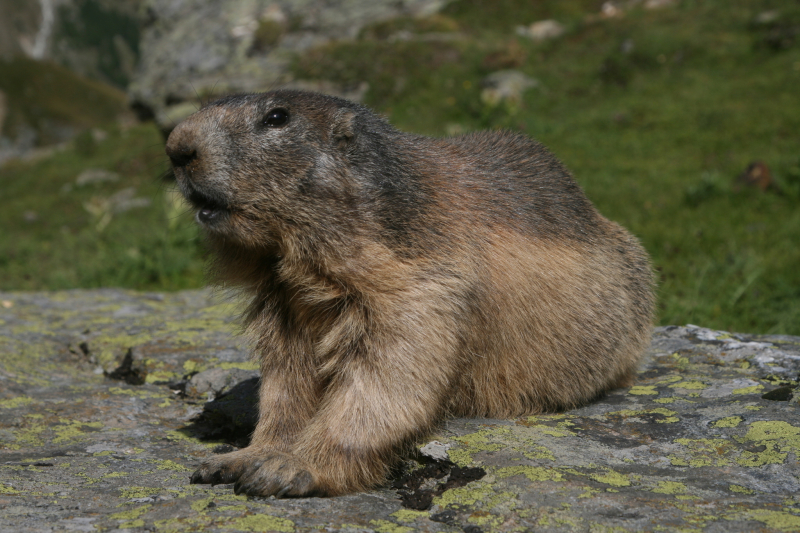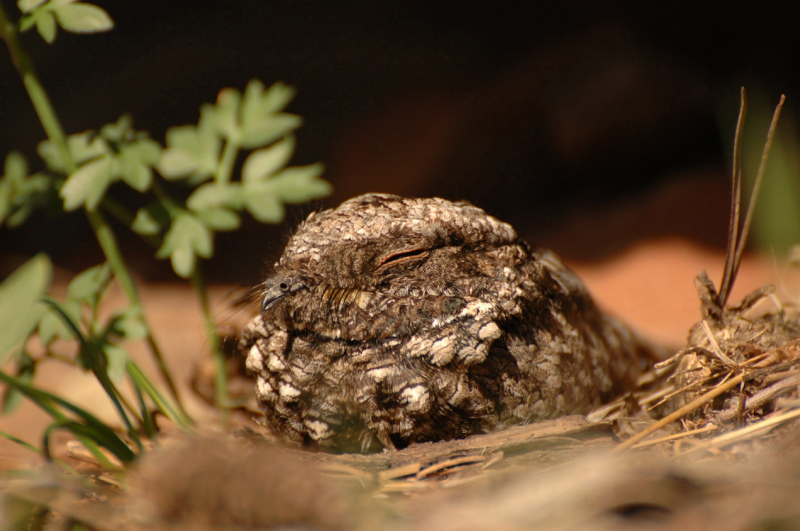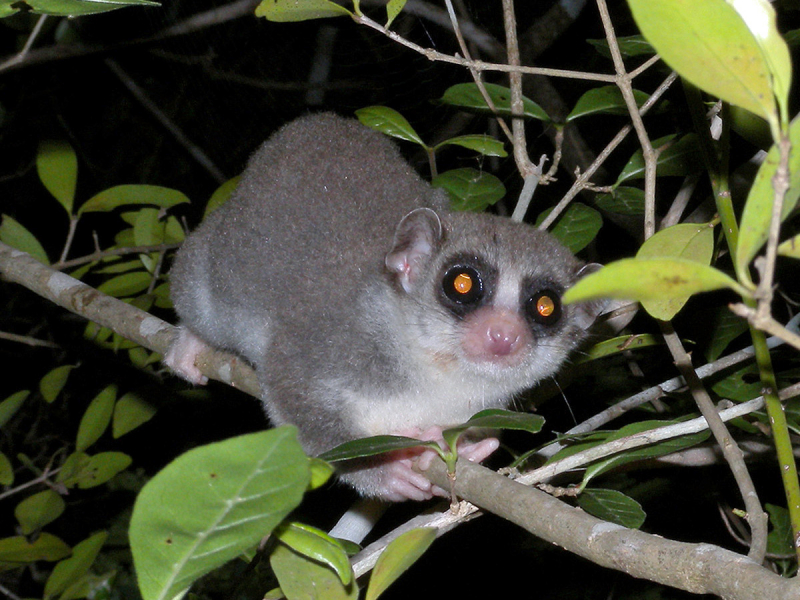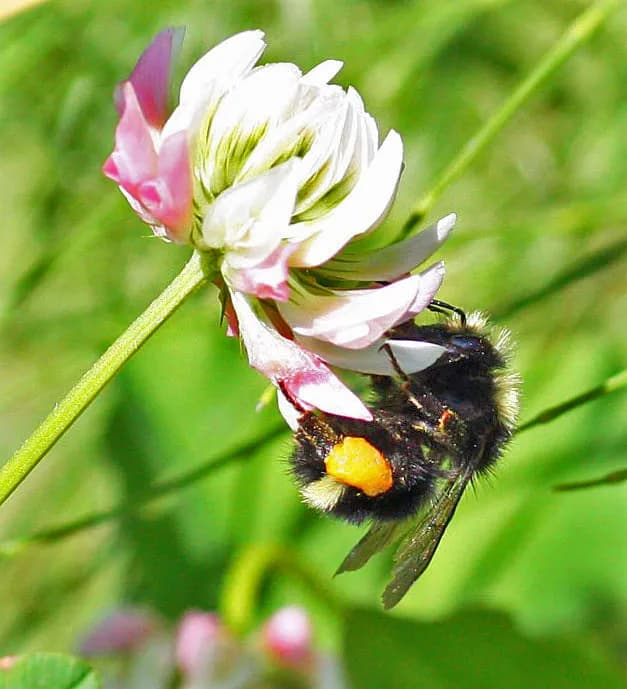Top 10 Coolest Hibernating Animals
An animal must learn to survive when its surroundings turn unfriendly. While some creatures leave the region, others go into a dormant stage where they remain ... read more...until conditions are more suited to them. Hibernation is the term used for this prolonged inactive condition that occurs during the winter, estivation is used when it occurs during the summer. Here is a list of the coolest hibernating animals, let's find out!
-
The Alpine Marmot (Marmota Marmota) is a sizable ground squirrel that belongs to the marmot family. It is found in high numbers in mountainous areas of central and southern Europe, at heights between 800 and 3,200 m (2,600–10,500 ft) in the Alps, Carpathians, Tatras, and Northern Apennines. In 1948 they were reintroduced with success in the Pyrenees, where the alpine marmot had disappeared at end of the Pleistocene epoch.
Alpine marmots hibernate in order to withstand the harsh winter weather variations and food shortages. Alpine marmots gather old stems in their burrows as the summer comes to an end to prepare for their upcoming hibernation, which can begin as early as October. They use a mixture of soil and their own waste to seal the hole. Alpine marmots will cluster up near one another as winter approaches and start to hibernate, slowing their breathing and heart rate to five beats per minute and 1-3 breaths per minute, respectively. Passive heat exchange between nestmates is facilitated by cuddling, and larger hibernating groups have higher survivorship rates. During hibernation, their stored fat supplies are used slowly, which usually allows them to survive the winter.

Pixels 
Encyclopedia of Life -
A member of the nightjar family, the Common Poorwill (Phalaenoptilus nuttallii) is a nocturnal bird. From southern Alberta and British Columbia through the western United States and northern Mexico, it can be found. The bird prefers stony desert slopes with little flora as well as dry, open habitats with grasses or bushes. While some stay further north, the majority of northern birds winter within their breeding range in central and western Mexico. This is the only bird known to enter prolonged torpor is the common poorwill (weeks to months).
The Common Poorwill is the only known bird species to hibernate. It picks a spot under shallow rocks or rotten logs and stays there for up to five months. Its daily energy needs drop by 93% and it can stay asleep for 100 days. Once hibernation is over, it needs seven hours to get back to its normal temperature.

All About Birds 
BirdNote -
The Ursidae family of carnivorous animals includes Bears. Even though there are only eight species of bears left in the world, they are widely distributed and may be found in a variety of environments in the Northern Hemisphere and to some extent in the Southern Hemisphere. The continents of North America, South America, Europe, and Asia all have bear populations. Large bodies with stocky legs, long snouts, small, rounded ears, shaggy hair, plantigrade paws with five nonretractile claws, and short tails are common traits of contemporary bears.
Only the American Black Bear, Asiatic Black Bear, Brown Bear, and Polar Bear are hibernators. These hairy creatures don't actually hibernate because they can still wake up at any time and only experience a slight reduction in body temperature. In fact, a mother bear will give birth to her cubs while she is hibernating. The bears' heartbeat will slow down like true hibernators, and they may go for extended periods of time without eating. A black bear can go up to 100 days without eating or drinking while hibernating, and its heart rate can plummet from 40–50 to 8 beats per minute.

Smithsonian Magazine 
Via: North American Bear Center -
Mammals in the Chiroptera order include Bats. They are the only animals that can truly and continuously fly thanks to the adaptation of their forelimbs as wings. When flying, bats are more nimble than most birds because they use their extremely long, spread-out digits, which are protected by a thin membrane called a patagium.
In the winter, bats hibernate. Big brown bats can hibernate for 64–66 days in the wild, but one lasted an amazing 344 days in captivity! These little fellas don't need to eat, but they do need to drink when they wake up. Some bats only breathe every two hours, and their heart rates plummet from 1000 to merely 25 beats per minute. Because it takes less energy to utilize stored fat for survival than to travel in search of food, a bat's body temperature drops, and its metabolic rate slows. For the duration of their hibernation, bats need roosts that are cold and keep a constant temperature.

EmboraWild 
Discover Wildlife -
The Fat-Tailed Dwarf Lemur (Cheirogaleus medius), also known as the lesser dwarf lemur, western fat-tailed dwarf lemur, or spiny forest dwarf lemur, is endemic to Madagascar. This species is nocturnal, with a diet of insects, other small animals, fruits, and flowers. The adult lemur mass is 160 grams. There is some C. medius that lives in tropical rain forests, despite the fact that the majority of them are found in dry regions. Research has shown that the length of these creatures' hibernation is related to how they reproduce. These lemurs are more active in the rainforest than they would be in a dry forest.
Recent studies have revealed that C. medius hibernates (or aestivates), despite the fact that temperatures are still high in Madagascar's tropical winter. Hibernation has only ever been proven in one ape and the first tropical mammal. The lemur appears to be evading the drought, despite the fact that the winter in Madagascar is dry. It has a seven-month hibernation period. The lemur does not regulate its body temperature while hibernating, and if the tree hole in which it is sleeping is not properly insulated, its body temperature swings in accordance with the outside temperature. This is in contrast to species that hibernate in temperate climates.

Wiktionary 
Duke Lemur Center -
The Common Box Turtle (Terrapene Carolina) is a species of box turtle with six existing subspecies. The box turtle has a distinctive hinged lowered shell (the box) that allows it to completely enclose itself. Its upper jaw is long and curved. Common box turtles are primarily terrestrial reptiles that are frequently spotted in the morning or after a rainstorm when they come out from the cover of decaying leaves, logs, or a mammal burrow to hunt for food. Earthworms, snails, slugs, insects, wild berries, roots, flowers, fungi, fish, frogs, salamanders, snakes, birds, eggs, and occasionally even animal carrion are all part of these turtles' amazingly diverse diet.
Box turtles that are hibernating can be found in well-hidden locations all over Southern North America (USA and Mexico). Depending on the area and subspecies of turtle, the period of their winter hibernation can range from 77 to 154 days. They no longer need to breathe in air, and their heart rate lowers to just one beat every five to ten minutes (although they do take in oxygen through their skin).

Encyclopedia Britannica 
Wikipedia -
A Bumblebee is any of the more than 250 species that make up the genus Bombus, which is a member of the bee family Apidae. Although a few extinct similar genera (like Calyptapis) are known from fossils, this genus is the only living member of the tribe Bombini. Although a few lowland tropical species have been identified in South America, they are mostly found in higher latitudes or altitudes in the Northern Hemisphere. New Zealand and Tasmania have also received European bumblebee introductions.
Bumblebees can spend a significant portion of their lives hibernating, and some queen bees can do so for up to nine months or about three-quarters of their lifespan. Male and worker bee populations decline when the temperature drops, but the queen overwinters and lives. She spends the winter in a hole in the ground, a decaying tree stump, or under some leaves. Six to eight months later, she will reappear, warm up, and then locate a suitable location to build a nest and start a brand-new colony of bees. Hibernation is crucial because it shields the queens from the difficulties of life above ground, including the dangers of predation, malnutrition, and infections.

Pinterest 
Honey Bee Suite -
The term "Garter Snake" refers to tiny to medium-sized, typically nocturnal snakes of the genus Thamnophis in the family Colubridae. Thamnophis species are native to North and Central America, and they can be found everywhere from the subarctic plains of Canada to Costa Rica. Garter snakes have roughly 35 identified species and subspecies, and they all look very different from one another. The majority of them have wide, rounded eyes with round pupils, a slender body, keeled scales, and a pattern of longitudinal stripes with or without spots (others don't have stripes at all). Additionally, they come in a wide range of overall lengths, ranging from 18" to 51". (45-130cm).
Garter snakes spend the whole winter in a dormant state, often from late October through March or early April, however, you may catch a glimpse of one out in the open enjoying the sun on a bright winter day. Like other reptiles, they have a cold-blooded nature, therefore sunbathing helps them warm up. Garter snakes will seek out a warm, cozy location underground to spend the winter. In order to stay warm, garter snakes also spend the winter together. Snakes maintain their hydration during hibernation by absorbing moisture via their skin. Due to their low body temperatures, they are unable to digest food at this time. They build up body fat prior to winter to get ready for the inactive season, just as other animals that hibernate.

CBC 
Daily Hampshire Gazette -
A Hedgehog is a spiny mammal belonging to the eulipotyplan family Erinaceidae's subfamily Erinaceinae. In addition to New Zealand by importation, there are seventeen species of hedgehogs spread over five genera in various regions of Europe, Asia, and Africa. Hedgehogs are not a native species in either Australia or the Americas. Amphechinus, an extinct genus, was once found in North America.
Hedgehogs are omnivorous even though they are generally categorized in the disbanded order Insectivora. They eat berries, melons, watermelons, snails, frogs, toads, bird eggs, carrion, mushrooms, grass roots, and insects. After hibernating, berries make up a large portion of an Afghan hedgehog's diet in the early spring. A hedgehog's body temperature can drop to roughly 2 °C (36 °F) while it is hibernating. The body temperature of the animal rises from 2 to 5 °C (36 to 41 °F) to its regular 30-35 °C (86 to 95 °F) body temperature when it emerges from hibernation. They have special cells that release heat 20 times faster than white cells. If temperatures drop too low, their heartbeat picks up to produce more heat, which wakes them up briefly before they fall asleep again.

Newsweek 
Nottingham Trent University -
A Snail is a shelled gastropod. The name is most frequently used to refer to terrestrial pulmonate gastropod molluscs, or land snails. The majority of the Gastropoda molluscans, however, who have coiled shells big enough for the animal to fully retract into, are also known by the popular name "snail". When the word "snail" is used in this broad sense, it refers to many different species of freshwater and sea snails in addition to land snails. Land snails with only a very little shell (that they cannot retract inside) are frequently referred to as semi-slugs, as are gastropods that naturally lack a shell or have only an internal shell.
Garden snails typically hibernate whenever the temperature falls below 60 °F (15 °C), frequently following the first frost. The majority of snails hibernate in the northern hemisphere from October to April. In the southern hemisphere, hibernation normally lasts from May until September. Garden snails that hibernate over the winter doze off and emerge from concealment when the weather warms up and they are ready. Snails can hibernate for a few days, many months, or even several years.

The Guardian 
Wiktionary































